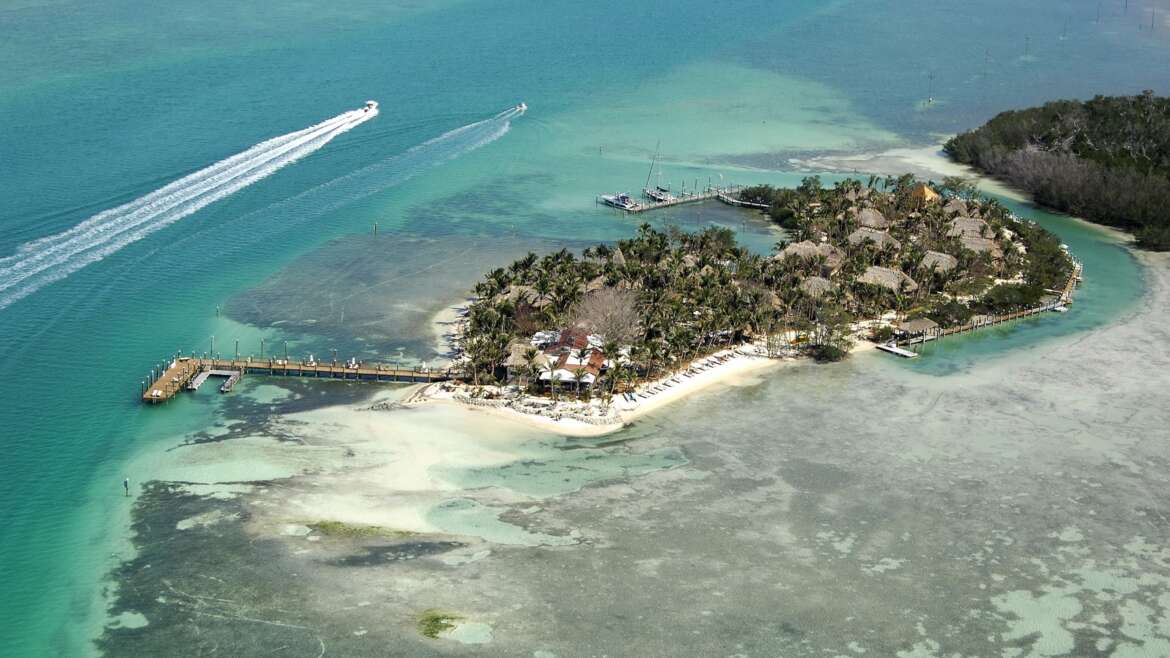Lower Keys Offshore & Reef Fishing
Offshore and backcountry fishing in the Lower Keys,
Capt. John fishes out of
BY CAPTAIN JOHN SAHAGIAN
Little Torch Key. Catch up with him at 305-587-3493 or on the web at www.funyetcharters.com
Dolphin prefer a wind from the east to the south for optimal feeding behavior. The dolphin do not care how rough the water is, in fact, the rougher the water, the better they seem to bite. I, on the other hand, have a preference for not getting my butt handed to me every time I head offshore. I find that the older I get, the more I enjoy a calm day offshore. The most I want to expose myself to is that light chop so often associated with Keys offshore waters.
By the way, just because conditions might be optimum for one of these species, that does not mean that they are not also optimum for the other. Tarpon can be caught in almost any wind direction or velocity as long as you work the more protected waters. I like to work some of the lesser targeted bridges and channels.
The majority of the fleet in the Lower Keys will concentrate on the waters of Bahia Honda. There is a good reason for this. It is because there is likely a more dense population of tarpon in that channel than any other in the Keys. This population, along with the environment, can also make for some unique problems:
- The first big negative, in my opinion, is the ever increasing overpopulation of large sharks that take advantage of the struggling fish to snatch an easy meal. Sharks are not as dumb as people tend to think, they are however lazier than most people believe. They are much happier snacking on a slow meal than chasing down fast food.
- The next issue is the fact that there are two sets of bridges along with their myriad of pilings. The tarpon will take advantage of these pilings to cut your line and escape.
- Last but not least is that there will most likely be over a dozen other boats anchored up with you creating even more obstacles to landing your fish.
Choosing a lesser fished channel will most likely result in less opportunity for a hookup. However, it might well mean more tarpon to the boat, and most assuredly less fish lost to sharks.
Plan B
If the wind sets in for a good long blow and you wish to have fish on the menu, I present plan B. My favorite plan B is to head to the Gulf side and work the channels primarily for mangrove snapper. Most Lower Keys Gulf side channels that have any hard structure at all, be it coral heads, holes, or ledges, will hold schools of mangroves. Mixed in with the mangroves will be mutton snapper, the occasional cobia or an assortment of mackerel. These channels and the ledges along the outer banks of the Lower Keys hold a lot of fish. Anchoring up current of a structure and deploying a chum line will get the fish feeding in no time.
Do not make the mistake of under baiting. What I mean is that if you put out tidbits, you will catch less than impressive fish. The mantra, “Big bait big fish,” works well out back. My favorite big baits are live pinfish or a chunk of ballyhoo with the backbone left in. Present them as naturally as possible and hold on.
More soon. You know it is spring when you start seeing dolphins and tarpon.
My favorite baits are live pinfish and cut fresh ballyhoo. Silver dollar size pins and for ballyhoo, I do not try to get more than two baits from a medium ballyhoo. Yes, little fish will nibble on a big piece of ballyhoo, but they will not be able to finish it too fast. This gives larger fish the opportunity to explore the activity and decide to snatch the food away from the smaller competitors.
The bottom line is that there are plenty of options which take nothing but a light breeze to work. You do not need to sit home waiting for the wind to drop to enjoy a good day on the water. Fishing ADD treated and under control.


